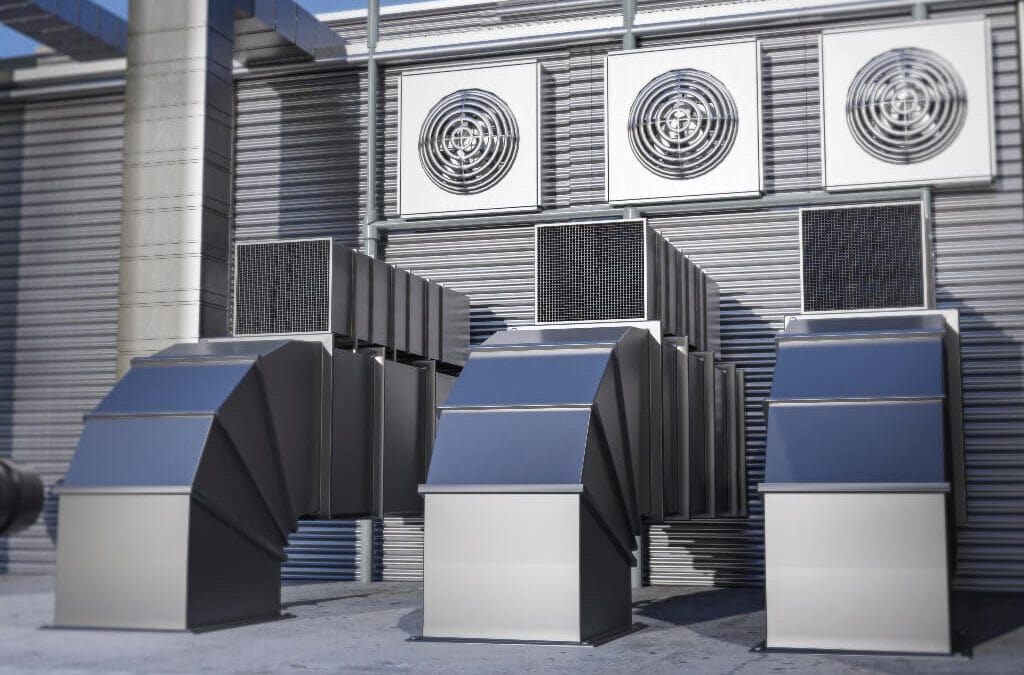Ventilation Systems
Air Handing Unit
Air Handling Unit (AHU): The Heart of Efficient Ventilation
Air Handling Units (AHUs) are integral components of heating, ventilation, and air conditioning (HVAC) systems, serving as the central hub for managing and circulating air within buildings. These units play a crucial role in ensuring indoor air quality, thermal comfort, and energy efficiency. In this article, we will explore the functions, components, and the environmental impact of AHUs, emphasizing their importance in creating healthy and comfortable indoor environments.



Understanding the Role of AHUs
1. Air Filtration and Purification: AHUs are equipped with filters that capture airborne particles, allergens, and contaminants. This not only enhances indoor air quality but also contributes to a healthier living or working environment.
2. Temperature and Humidity Control: AHUs regulate the temperature and humidity of the air circulating within a building. By conditioning the air to meet specific comfort parameters, AHUs ensure a pleasant and consistent indoor climate.
3. Air Distribution: AHUs are responsible for distributing conditioned air to various spaces within a building. Ductwork connected to the AHU delivers the treated air to different rooms, ensuring uniform comfort throughout the structure.
4. Energy Recovery: Modern AHUs often incorporate energy recovery systems. These systems capture and reuse the energy present in the exhaust air, improving overall energy efficiency and reducing operational costs.
Components of an AHU
1. Fans: AHUs contain fans that facilitate the movement of air. These can include supply fans, which push conditioned air into the building, and exhaust fans, which remove stale air.
2. Heating and Cooling Coils: Heating and cooling coils are essential components for temperature regulation. These coils, often connected to the building’s HVAC system, ensure that the air leaving the AHU is at the desired temperature.
3. Filters: Air filters within AHUs trap particles and pollutants, preventing them from circulating through the building. Regular maintenance of these filters is crucial for sustained air quality.
4. Humidifiers and Dehumidifiers: To control humidity levels, AHUs may be equipped with humidifiers to add moisture or dehumidifiers to remove excess moisture from the air.
5. Controls and Sensors: Sophisticated controls and sensors allow for precise adjustments based on factors like temperature, humidity, and occupancy. These features enhance the overall efficiency of the HVAC system.
Environmental Considerations
1. Energy Efficiency: AHUs can significantly impact the energy efficiency of a building. By utilizing energy-efficient components and control strategies, AHUs contribute to reduced energy consumption and operational costs.
2. Indoor Air Quality: The air filtration capabilities of AHUs play a vital role in maintaining indoor air quality. This, in turn, has a direct impact on the health and well-being of occupants.
3. Sustainable Design: Incorporating energy recovery systems, utilizing eco-friendly refrigerants, and adopting sustainable manufacturing practices for AHUs contribute to a more environmentally friendly HVAC system.
Conclusion
In conclusion, Air Handling Units are the unsung heroes of HVAC systems, ensuring that the air circulated within a building is not only comfortable but also clean and energy-efficient. As advancements in HVAC technology continue, AHUs will play a pivotal role in creating sustainable and healthy indoor environments, aligning with the global emphasis on energy conservation and environmental responsibility.


